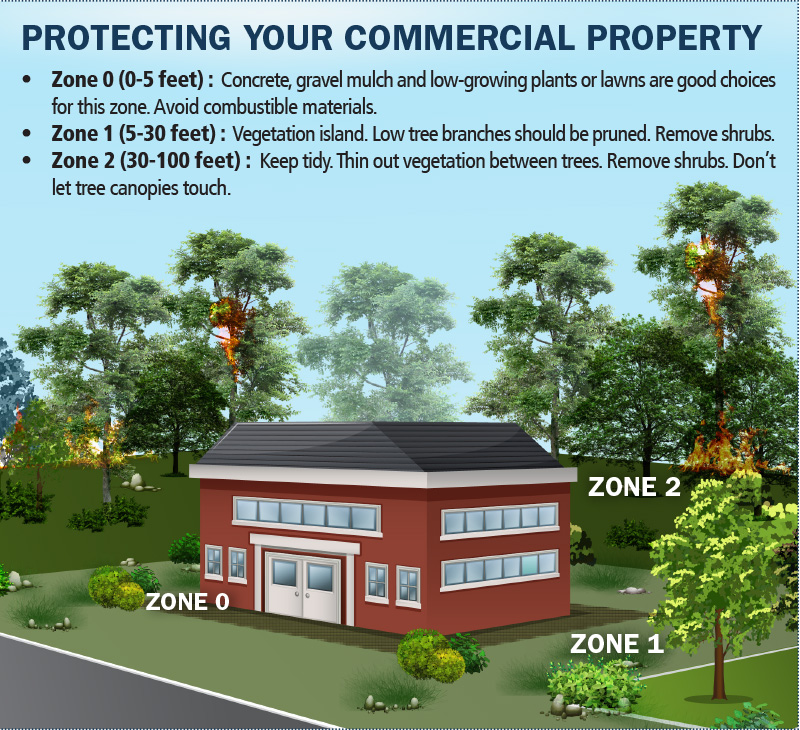
WITH WILDFIRES growing in number and intensity and a difficult property insurance market, businesses that own properties in wildfire-prone areas need to do all they can to protect their facilities.
Hardening a building against wildfires by using defensible space, fire-resistant materials and other techniques makes sense, because:
- It can reduce the chances of the building suffering damage if a wildfire hits the area.
- It can help a business secure or keep insurance for the property or reduce the severity of future rate hikes. Insurers that are willing to cover properties in higher-risk areas are often requiring that the owners take these steps in advance.
In this issue we will look at how you can create a defensible space for your business to better protect your property and appease your insurer.
Hardening your property
Think of defensible space as a protective area around your property that includes vegetation that is carefully selected and spaced and routinely maintained. The spacing between grass, shrubs and trees is crucial to protecting a property, be that a business or a home.
Defensible space is usually broken down into zones:
Zone 0 (Zero to 5 feet from building) – This area should be kept clear of combustible debris or shrubbery.
CalFire recommends:
- Using hardscape. Instead of bark or mulch, use gravel, pavers or concrete.
- Removing all dead and dying plants. Do this on all adjacent areas, as well as removing debris and leaves from the building roof and rain gutters.
- Removing or pruning flammable plants and shrubs near windows.
- Removing any branches that hang over your roof. No new trees should be planted in this zone.
- Limiting combustible items. Remove any decorations, fixtures or furnishings that are made of flammable material.
Zone 1 (5-30 feet from building) – This is considered the ”combustible zone” since it is likely to have trees, grass and bushes. Besides paying attention to spacing and how many plants you have, this area requires regular upkeep to reduce the risk of fire.
CalFire recommends:
- Removing all dead plants, grass, dry leaves, pine needles and weeds (vegetation).
- Trimming trees regularly to keep branches a minimum of 10 feet from other trees and from hanging over the building.
- Planting low, well-irrigated plants like vegetables, succulents, grasses, groundcover, seasonal flowering annuals, or lawn (and walkable lawn alternatives) close to the building, and larger shrubs and trees further away from the house.
- Using non-combustible materials for walkways.
Zone 2 (30 to 100+ feet from building) – This zone is essential for decreasing the speed of a fire.
Steps to take include:
- Maintaining plants and removing dry debris and dead plants.
- Using plants that are native to the area.
- Moving anything flammable during a nearby wildfire 30 feet away from structures. This includes any inventory or tools and implements you may keep on the property.
- Planting vegetation with ample spacing.
Part two: In the next issue, we will look at fire-resistant materials and actions you can take to harden your business property.
